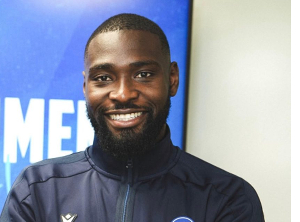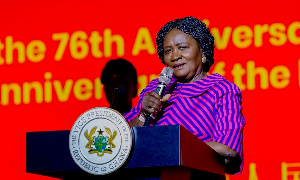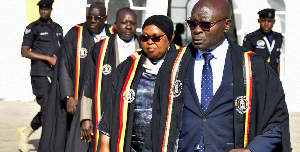Accra, May 4, GNA - Anti-Retroviral (ARV) Therapy centres providing treatment for Persons Living with HIV/AIDS (PLWHA) throughout the country have been scaled up from four to 28, an official of the National AIDS Control Programme (NACP) said on Thursday.
The designated centres include the 10 Regional hospitals, the Tema General Hospital and 13 other outlets comprising six Catholic Mission sites, four Treatment Acceleration Program (TAP) -Supported sites and three private sites.
The move is likely to cut down long distance transportation costs for PLWHAs in urgent need of ARVs and help reduce overcrowding in existing treatment centres such as the Korle Bu Teaching Hospital and the Komfo Anokye Teaching Hospital.
Ms Phyllis Ocran, Logistics Focal Person, NACP, was speaking in Accra at a dissemination workshop to discuss findings of a 2004 study by the Catholic Health Services and the Noguchi Memorial Institute for Medical Research into ARV programmes in Ghana.
She said health professionals in both the public and the private sector were currently being trained to run the new centres, saying that the NACP had made accurate forecasts for the number of PLHWAs who would need ARVs up till 2010.
The study, titled: "Assessment of Public and Private ARV Treatment Programmes in Ghana" was conducted in seven public and private health facilities in the Greater Accra, Eastern and Ashanti regions. It aimed at investigating Public-Private Interactions (PPIs) regarding the provision of ARV treatment and to identify some of the factors that have constrained the uptake of access to ARVs. The study noted that 33,000 people died from AIDS-related diseases in 2004 and estimated that the number of cumulative AIDS-related deaths would rise to 437,000 by 2010.
In 2004 alone, an estimated 71,000 PLWHAs in Ghana were at the stage where they required ARVs, adding that the cost for treating this number of patients with viral load tests stood at 80 million US dollars.
The few treatment sites situated mostly in the southern part of the country had constrained the uptake of ARV use, pointing out that PLWHAs incurred considerable costs before being enrolled into the ARV programme.
"Although PLWHA go through a number of medical and non-medical assessment before being enrolled into the ARV therapy programme, there appears to be no credible system to monitor adherence of patients admitted into the programme," it stated.
The study recommended the decentralisation of ARV treatment to regions and districts and the establishment of support systems for both caregivers and PLWHAs.
Professor Sakyi Awuku Amoa, Director-General, Ghana AIDS Commission told the Ghana News Agency in an interview after the workshop that only 5,000 out of the 71,000 PLWHAs in Ghana had access to ARV treatment. He said a month's supply of ARV treatment cost 250 dollars per patient, saying "Government and other donors pay 95 per cent of the cost of treatment for each patient".
Health News of Thursday, 4 May 2006
Source: GNA












